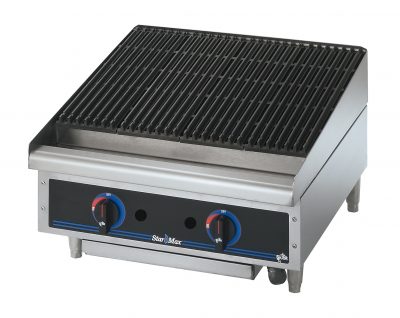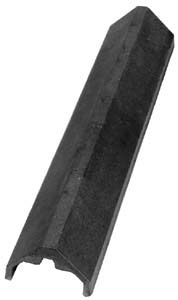The Basics of Charbroilers
Mar 21st 2012
 In years past, the char broiler was the lifeblood of a steak house cooking line. Today, many other commercial eateries are seeing the benefits of char broiling as menus expand. There are many different choices to make when purchasing a commercial char broiler. You have to choose the power source of equipment: wood, charcoal, electricity, propane, or natural gas. Then, there are the items that do the actual charring: lava rocks, radiants, or ceramic briquettes.
In years past, the char broiler was the lifeblood of a steak house cooking line. Today, many other commercial eateries are seeing the benefits of char broiling as menus expand. There are many different choices to make when purchasing a commercial char broiler. You have to choose the power source of equipment: wood, charcoal, electricity, propane, or natural gas. Then, there are the items that do the actual charring: lava rocks, radiants, or ceramic briquettes.
Lava Rock and BriquettesBoth lava rock and briquettes cook the same way. A layer of these rocks are placed on a steel grate with burners or a heat source beneath them. The rocks then get very hot and radiate the heat up to the product. When cooking with these rocks, you can get flare-ups and true charring because direct flame from those flare-ups reach your food. Some people say that the flavor is better because you get the smoke from the drippings in the food. A tip when cooking with rocks; you want to make to use them in a single layer of rocks with a little space between all the rocks or briquettes. This allows the rocks to heat up, and release the heat. If there is no space between them, they will just trap the heat and disintegrate without releasing the heat up to the cooking grate.

Radiant Heat
Although some would argue using lava rocks or briquettes are the best way to go, there are advantages to radiant heat. Radiant heat will cook the food by having burners under a triangular shaped piece of stainless or cast iron (pictured at right). The metal traps and absorbs the heat and then deflects it upward towards the cooking grate. Depending on how hot you have your burners set at, the radiant can get red hot. The advantage to radiant heating is that there are no flare-ups since the burners are covered. Some would suggest this creates a more even heat across the cooking surface. In comparison, when cooking with rocks, to many or too few rocks on the cooking grate, results in hot or cold spots.
Keep In Mind When Determining Size
Unlike griddles where products can be placed tightly next to each other, charbroilers need space between food. Because of the constant intense heat, if there is no ventilation, this puts too much heat stress on the grates, burners, and liners, causing damage to your char broiler.
Depending on your needs, you can get char broilers in sizes from 12" all the way up to 72" in width.
